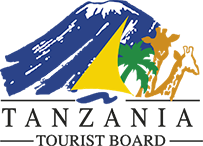Our Travel Tips
The short answer to the question: Can anyone climb Mount Kilimanjaro? Is obviously no.
If you are super young or ridiculously old you will unlikely be able to cope with what Kilimanjaro throws at you. Equally, if you are obese or severely disabled you can probably write Kilimanjaro off your bucket-list.
For the average person though, being able to successfully climb and summit Kilimanjaro is definitely attainable. You don’t need to be particularly fit and you do not need any technical climbing skills.
Children over the age of 10 can legally have a go, as can older generations in their 60s and 70s. And all you need is determination and then willing to get to the summit.
The real challenge with climbing Kilimanjaro is the altitude and the rate of ascent.
Standing at 5,895 meters (19,341 feet), Kilimanjaro is firmly classified as an extreme altitude mountain trek. At high altitudes the body is susceptible to a condition called Acute Mountain Sickness (AMS) or altitude sickness.
As many as 50% of people who climb Kilimanjaro suffer from AMS symptoms, often mild and moderate variants. However, more severe complications such as High Altitude Cerebral Edema and High Altitude Pulmonary Edema are also possible on Kilimanjaro, and can be fatal.
The onset of AMS symptoms is not directly correlated to factors of age, gender, fitness level etc.
To increase your chances of success you should apply these four principles:
- Longer routes provide more time to properly acclimatize and therefore success rates are higher. Seven day routes are our preferred option for trekkers
- Routes that offer a climb high, sleep low acclimatisation day are preferable the Machame route and Lemosho route provides the best climb high, sleep low opportunity
- Go slowly through- out your trek. Do not over-exert yourself. Conserve energy at all times. You will hear your porters say ‘Pole Pole’, this means Slow, Slow in Swahili. Listen to them
- Drink loads of fluids (3-4 liters of water a day)




